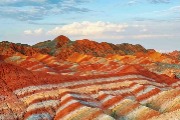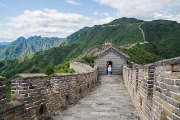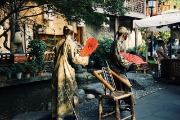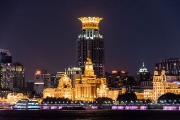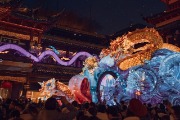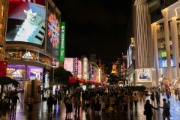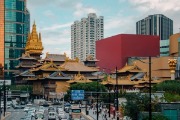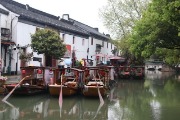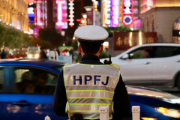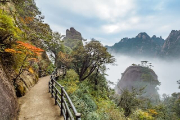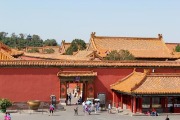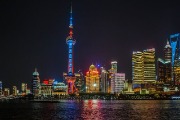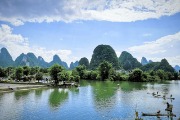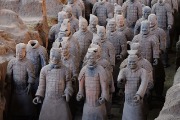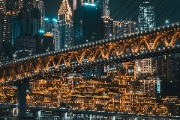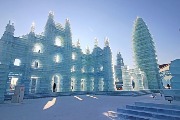Jing An Temple (Jing'an Temple)
It’s the most expensive temple in China.
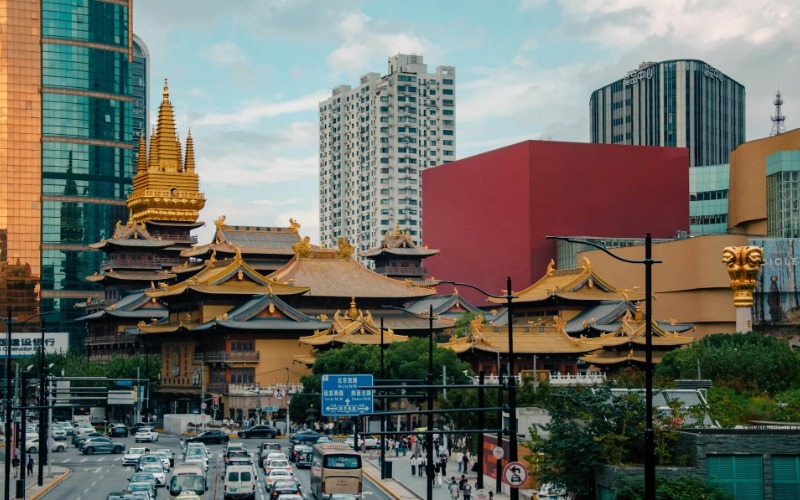
Jing An Temple in Shanghai has a pretty unique spot—it’s right in the heart of the city’s central business district. Outside, it’s all hustle and bustle, but step inside, and you’ll find a peaceful place for meditation. It’s this mix of sacred calm that makes it a spiritual haven for locals. We’ll dive into what Jing’an Temple offers and why it matters. Plus, we’ll clue you in on other cool spots nearby worth checking out. Stick around for some FAQs and ticket info on Jing An Temple at the end.
Table of Contents
Highlights of Jing An Temple
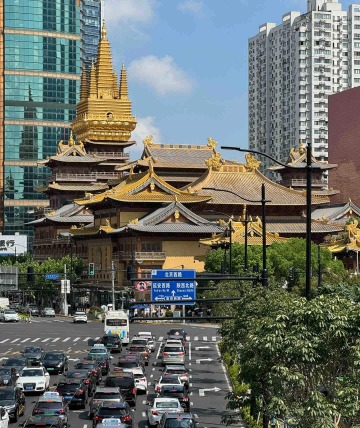
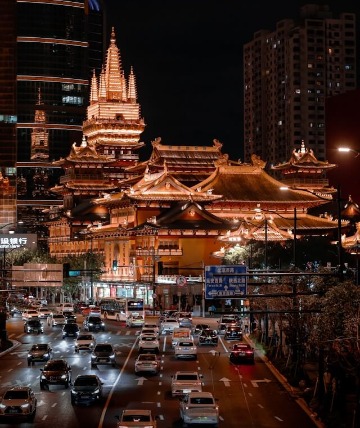
Jing'an Temple’s Appearance (静安寺的外观)
Jing An Temple is located in the heart of Shanghai’s bustling Jing’an District. The land on which the temple stands is worth a whopping 3 billion CNY (around 420 million USD), earning it the title of “China’s Most Expensive Temple.” If you want to admire the temple’s stunning exterior, head to the pedestrian bridge outside. From there, you’ll get a perfect view: the golden, majestic Jing’an Temple in the distance and the busy city streets up close. Every Friday and Saturday at 6 PM, the temple lights up, making it shine like gold.
Why is it that most temples in China are built on quiet mountains, while Jing An Temple is right in the middle of a busy city? And why has it survived for over 1,500 years without anyone daring to tear it down? Legend has it that there’s a “well to the underworld” beneath Jing’an Temple. During the construction of Shanghai’s Line 2 subway, workers accidentally dug up the well, which began to spill mysterious water. A famous feng shui master at the time advised that the temple must not be disturbed, so it has remained intact ever since. (This is, of course, one of Shanghai’s top ten legends.)
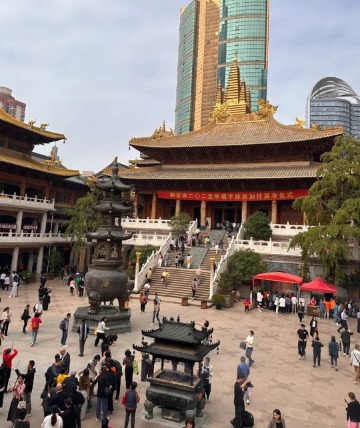
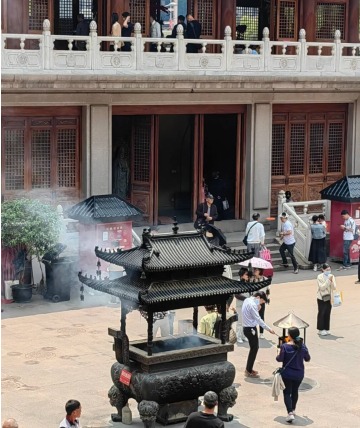
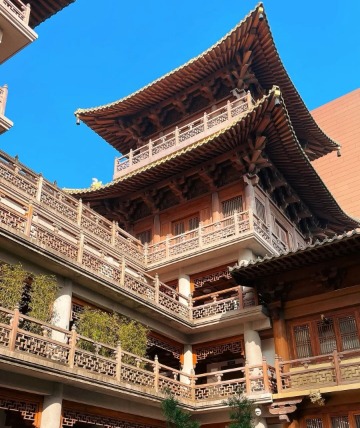
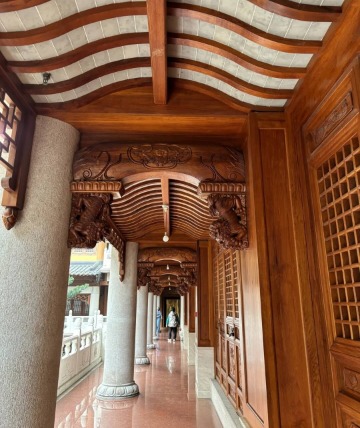
Jing An Temple’s Interior (静安寺的内景)
Inside Jing An Temple Shanghai, the layout mainly consists of three main halls: the Mahavira Hall, the Heavenly King Hall, and the Three Saints Hall. Every day, you’ll see many worshippers and tourists coming to light incense and pay their respects. As you step through the temple’s doors, you’ll immediately notice the entire plaza filled with the fragrant smoke of burning incense.
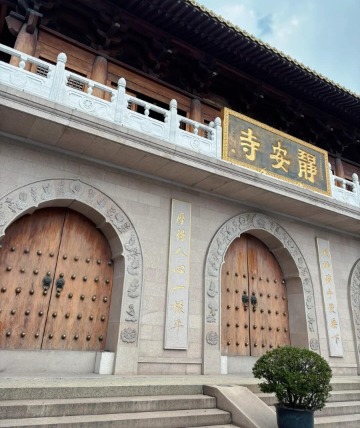
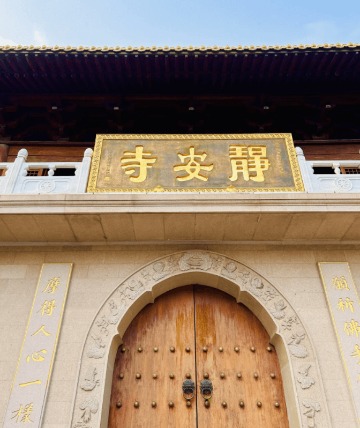
The "Jing'an Temple" Signboard (“静安寺”牌匾)
The signboard at the main entrance of Jing’an Temple was written by the famous Song Dynasty calligrapher, and it’s covered in gold leaf. The market value of this signboard is estimated at 40 million CNY (about 5.6 million USD). On the back of the signboard, you’ll find an engraving of the Diamond Sutra written by Su Shi.
Who is Su Shi? He was a famous writer and calligrapher during the Northern Song Dynasty, and almost every Chinese person knows his name. His works have had a profound impact not only in China but also in neighboring countries like Korea and Japan. In 2000, when the French newspaper Le Monde selected the “Heroes of the Millennium” (for the years 1001-2000), Su Shi was the only figure from Asia to make the list.
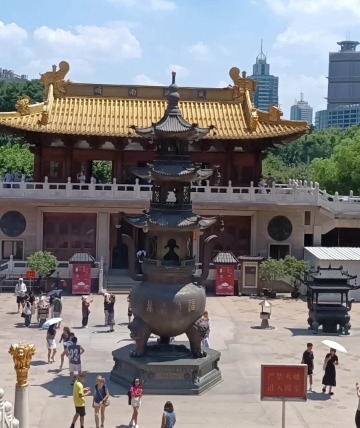
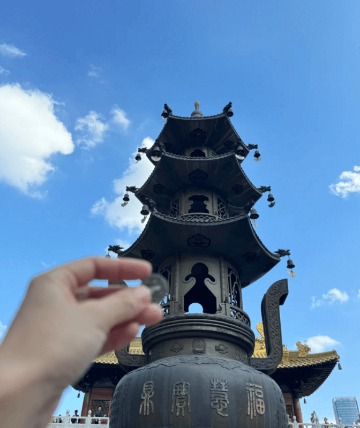
The Fortune and Wisdom Cauldron (福汇宝鼎)
As you walk through the main gate of Jing’an Temple Shanghai China, you’ll spot a tall bronze cauldron in the temple’s courtyard. This is the Fortune and Wisdom Cauldron (福慧宝鼎). Standing at 10.23 meters tall, it has a dignified and solemn appearance, symbolizing the compassion and wisdom of Buddhism. The cauldron is made of white copper, and its surface has been specially treated, allowing it to remain brilliant and gleaming even after years of exposure to wind and rain, without fading or discoloring.
Visitors can toss coins into the cauldron, making a wish for good luck. Every day, many tourists take part in this activity. While it’s rare for a coin to land inside, the fun and hopefulness of the tradition continue to draw plenty of people to join in.
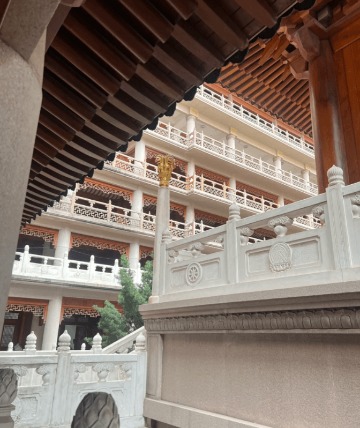
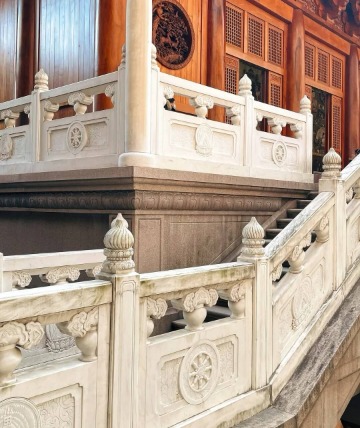
The White Marble Railings (汉白玉栏杆)
As you look around Jing An Temple, you’ll notice many white railings, which are made of Han White Marble. Han White Marble is a precious type of marble known for its pure texture, fine grain, and hardness. It’s commonly used in architectural decoration and sculptural art. The columns of the railings are also intricately carved with beautiful lotus flowers. In Buddhism, the lotus flower symbolizes liberation from suffering and the attainment of purity, representing a clean heart and a transcendent spiritual state.

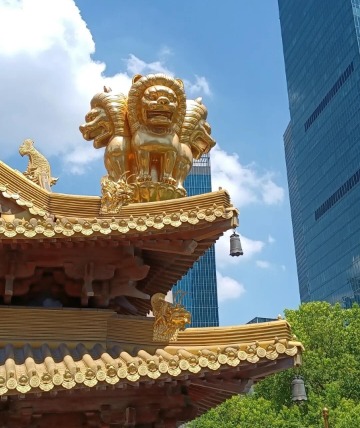
The Ashoka Pillar (阿育王柱)
Look up, and you’ll spot the iconic “Ashoka Pillar” at Jingan Temple. At the top, four large lions made of white copper and covered in gold leaf stand proudly. These lions represent the Buddha’s powerful voice while teaching—like a lion’s roar, echoing throughout the universe. The pillar itself is made from a single piece of granite, and it’s carved with the Diamond Sutra.
Who was Ashoka? He was the third emperor of India’s Maurya Dynasty and a devout Buddhist. During his reign, Buddhism flourished and became India’s state religion. The Ashoka Pillar is named in his honor, to commemorate his legacy.
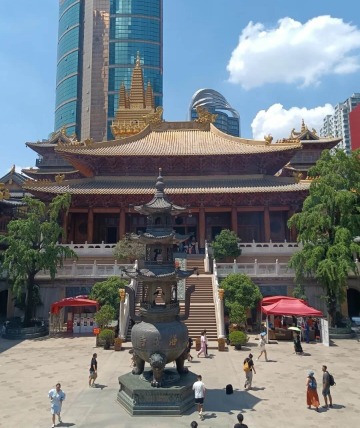
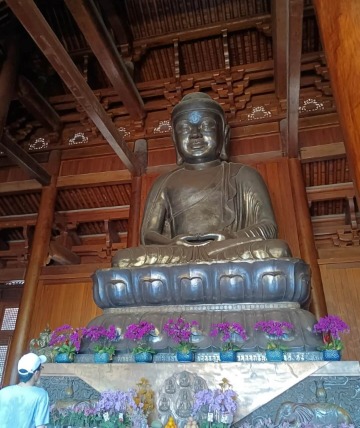
The Mahavira Hall (大雄宝殿)
After admiring the Ashoka Pillar, head into the Mahavira Hall. On the first floor, you’ll find a massive 15-ton, 8.8-meter-tall statue of Buddha Shakyamuni made of pure silver. The basement is home to a lecture hall, and two floors below that is the Sutra Storage. The entire hall is supported by thick pillars made of imported teak wood from Myanmar. Teak was chosen because it’s highly resistant to decay, wear, and pests.
What’s really impressive is that the hall was built without a single screw or nail. It uses the traditional Chinese mortise-and-tenon construction technique.
If you look at the roof, you might think it’s made of gold—it shines so brightly! But in fact, it’s copper. Copper tiles were used because they’re lightweight, strong, and durable, unlike glazed tiles or cement, which would have made the roof too heavy.
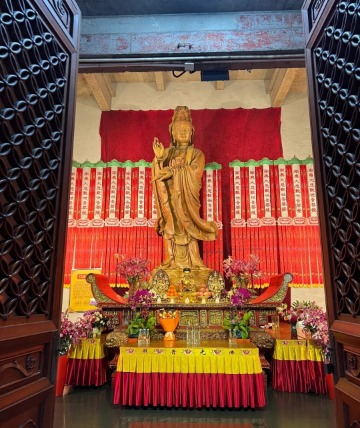
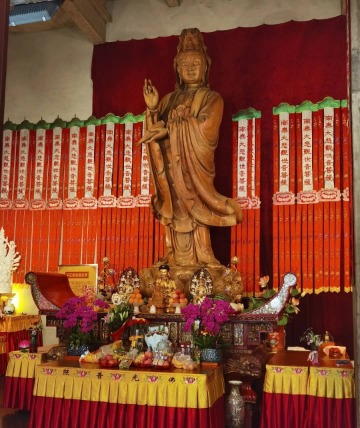
The Statue of Avalokitesvara (Guanyin) (观音菩萨像)
On the left side of the Mahavira Hall, you’ll find a statue of Avalokitesvara (Guanyin), carved from a single piece of camphor wood. It stands 6.2 meters tall and 2.6 meters wide. Avalokitesvara is the Bodhisattva of Compassion and Wisdom, holding an extremely important place in Buddhism.
Guanyin is deeply revered in Chinese folk belief. For over two thousand years, people have seen her as the “goddess who relieves suffering and answers all prayers,” a universal and compassionate figure who helps all who call upon her.
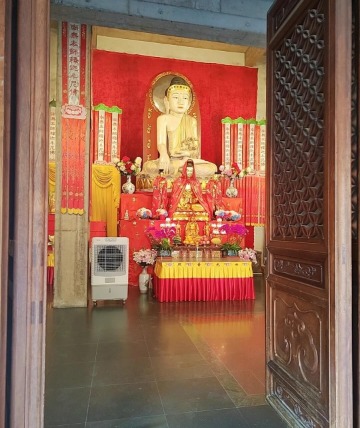
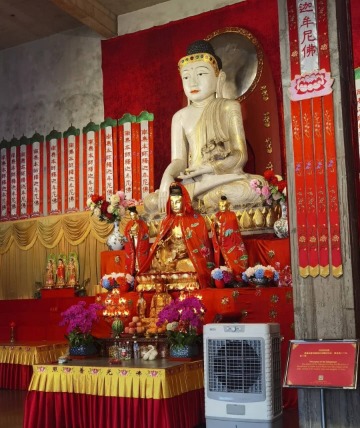
The Jade Buddha of Shakyamuni (释迦牟尼玉佛像)
On the right side of the Mahavira Hall, you’ll find the Jade Buddha of Shakyamuni, standing 3.78 meters tall and 2.6 meters wide. This statue is carved from a single piece of Burmese white jade. The Buddha’s expression is solemn, and his right hand is touching the ground in a gesture known as “Subduing Mara.” This posture is quite rare in Chinese Buddhist sculptures.

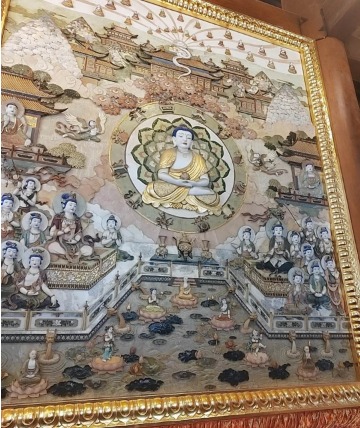
The Murals (壁画)
Behind the Mahavira Hall, you’ll find three murals that depict the life story of Shakyamuni Buddha. The murals are made with a variety of materials, including jade, coral, turquoise, and jadeite, all meticulously inlaid to create a detailed and beautiful design.
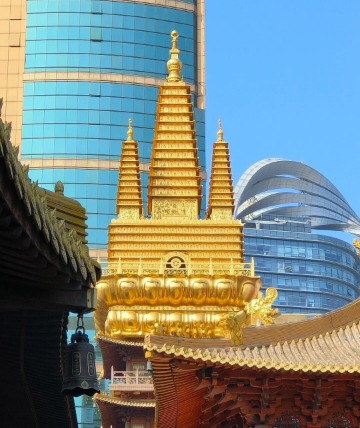
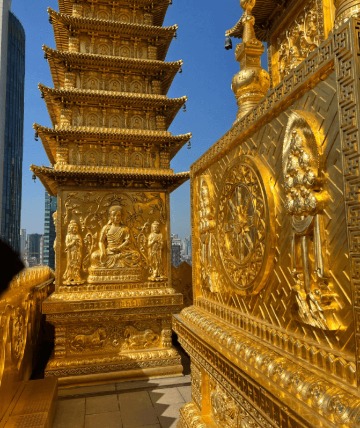
The Vajra Throne Stupa (金刚宝座塔)
Behind the Mahavira Hall, if you look up, you’ll see a golden stupa – the Vajra Throne Stupa. This stupa is unique to Tibetan Buddhism and is entirely covered in gold leaf.
Activities at Jing An Temple
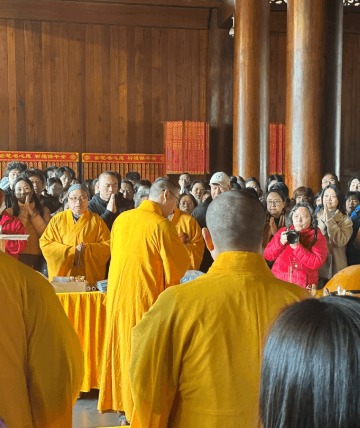
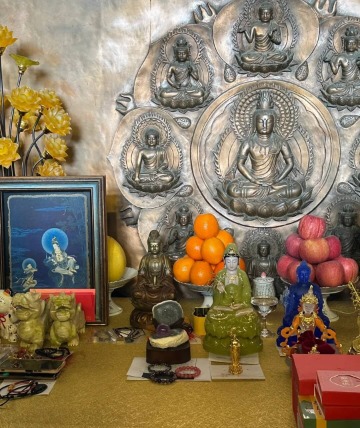
The Consecration Ceremony (开光仪式)
The consecration ceremony at Jing’an Temple Shanghai China is usually held on the last Saturday of each month, starting at 10:30 AM and lasting about 20 minutes. During the ceremony, the monks sprinkle water, chant sutras, and use mirrors to circle around, creating a solemn and sacred atmosphere.
What is consecration? In Buddhism, consecration is the process through which a high-ranking monk imbues an object with the wisdom and compassion of the Buddha and Bodhisattvas, granting it divine power.
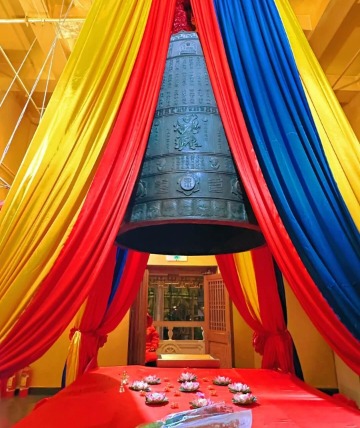
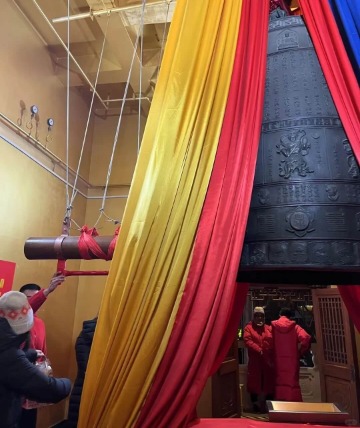
New Year’s Bell Striking (跨年撞钟)
The New Year’s Bell Striking event at Jing An Temple takes place every year on December 31st from 11:00 PM to 1:00 AM on January 1st. The event is free, and anyone can join the line to strike the bell.
In Buddhism, the sound of the bell is believed to purify the soul and dispel worries. Listening to the bell’s toll is said to help people let go of their troubles, while bringing wisdom and good fortune. So, striking the bell at the New Year symbolizes letting go of anxiety, praying for peace and blessings, and welcoming the start of a fresh year.
Nearby Attractions of Jing'an Temple
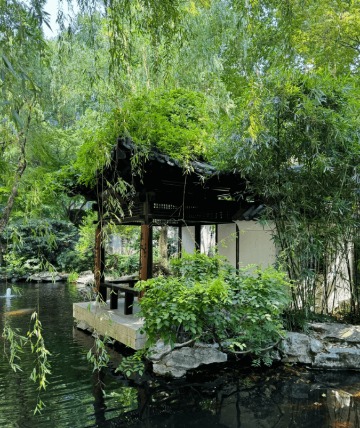
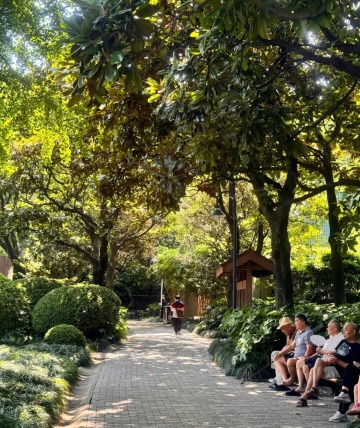
Jing'an Park (静安公园)
After visiting Jingan Temple, there are plenty of other spots nearby worth checking out. Jing’an Park is less than 100 meters from the temple, just a short walk away. You can relax here, playing chess or chatting with locals, or enjoy a cup of jasmine tea in the Ba Jing Garden, soaking in the peaceful afternoon vibe.
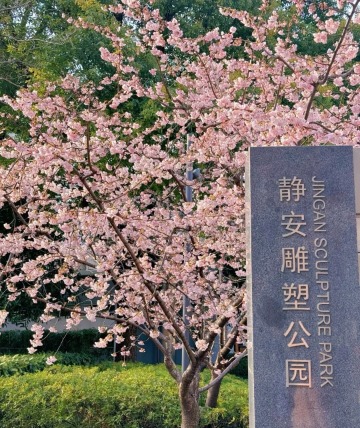
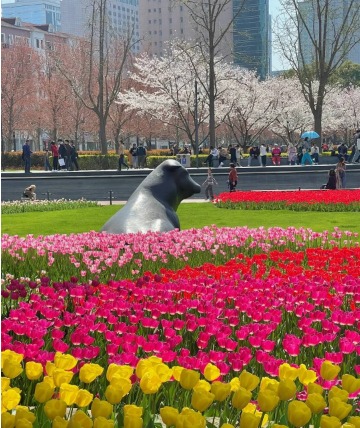
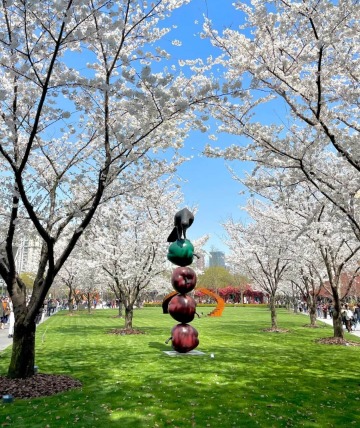
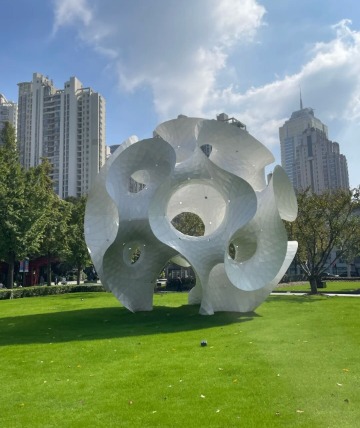
Jing'an Sculpture Park (静安雕塑公园)
Jing’an Sculpture Park is about 2.3 kilometers from Jing An Temple Shanghai and is the only dedicated sculpture park in downtown Shanghai. The park features a wide variety of sculptures, from abstract modern art to more traditional, figurative pieces, showcasing the unique perspectives and thoughts of the artists. In addition to the sculptures, every spring, the park transforms into a sea of flowers, with cherry blossoms, plum blossoms, and tulips all blooming at once.
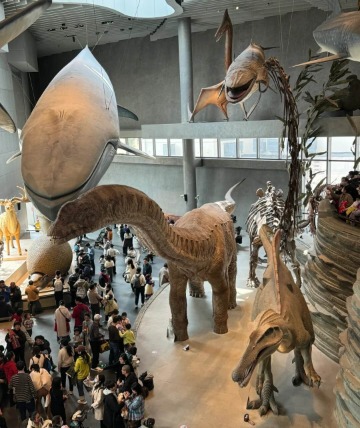
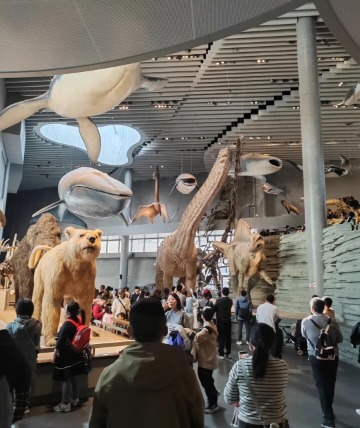
Shanghai Natural History Museum (上海自然博物馆)
The Shanghai Natural History Museum is about 3 kilometers from Jing’an Temple, located within Jing’an Sculpture Park. The museum boasts many priceless exhibits, such as fossils of the Mamenchisaurus and ancient Yellow River elephants. These fossils not only record the glorious history of life on Earth but also testify to the great forces of natural selection and biological evolution. Additionally, the museum showcases telescopes once used by scientific giants like Galileo, Kepler, and Newton, as well as rare meteorite specimens.
The museum is open daily from 9:00 AM to 5:00 PM, but it’s closed on Mondays.
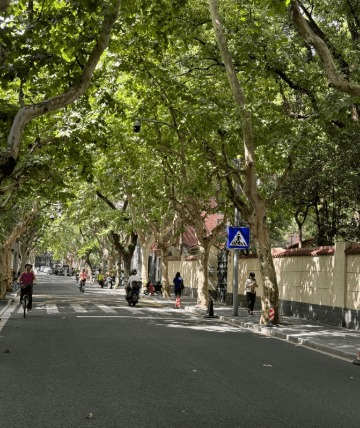
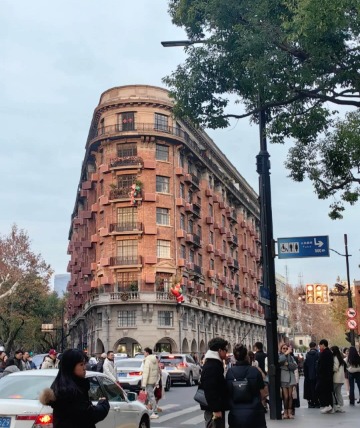
Wukang Road (武康路)
Wukang Road is about 2 kilometers from Jing An Temple Shanghai and is one of the most popular streets among young people in Shanghai. The most iconic building here is the Wukang Building, designed by the famous architect Wu Dake. On this street, you’ll find unique art galleries, design studios, bookstores, and cafes. The tree-lined streets, vintage buildings, and hidden shops around every corner all come together to give Wukang Road its distinctive charm.
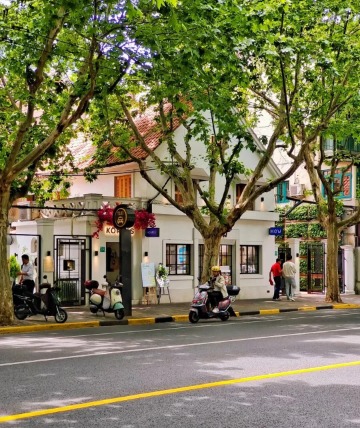
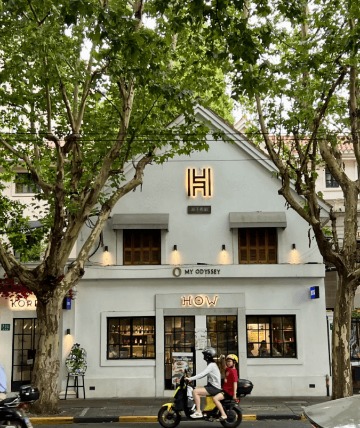
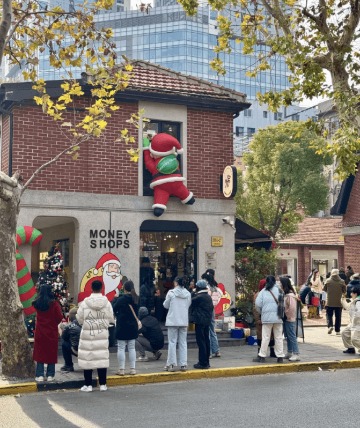

Yuyuan Road (愚园路)
Yuyuan Road is about 1.5 kilometers from Jing’an Temple and is one of the streets with the most historical buildings in Shanghai, with three times the number of heritage structures compared to Wukang Road. Along both sides of Yuyuan Road, you’ll find a mix of garden villas, apartment buildings, former residences of famous Chinese figures, and memorial halls.
During the Christmas season, Yuyuan Road transforms into a festive, fairy-tale wonderland. The street is filled with Christmas decorations, like Santa Claus climbing the walls and beautifully arranged window displays, drawing a large crowd of visitors who come to take photos and enjoy the holiday spirit.
FAQs About Jing'an Temple Shanghai
1. How old is Jingan temple?
Jingan Temple’s history is believed to date back to 247 AD, making it over 1,700 years old. Originally called Hudu Chongxuan Temple, it was renamed Jing An Temple during the Northern Song Dynasty. Over the centuries, it has undergone multiple relocations and reconstructions. In recent decades, the temple has undergone several expansions and renovations, resulting in the magnificent structure we see today.
2. Why is Jing'an Temple considered the most expensive temple in China?
Jing’an Temple is often referred to as the most expensive temple in China, mainly due to the high cost of its land and construction. Located in Shanghai’s busiest commercial district, the land alone is valued at around 3 billion CNY (approximately 420 million USD). Additionally, the cost of building and maintaining the temple has also been very high, reaching approximately 2.8 billion CNY (about 392 million USD).
How to Get to Shanghai Jing An Temple
By Metro: Take Line 2 or Line 7 and get off at Jing’an Temple Station.
Hours & Fees
Hours
Daily from 7:30 AM to 5:00 PM.
On Fridays and Saturdays, the temple lights up from 6:00 PM to 10:00 PM, but it is closed to the public during this time.
Time Required
1-2 hours
Fees
50 CNY per person on regular days (about 7 USD)
100 CNY per person on holidays (about 14 USD)
1,000 CNY per person on New Year’s Eve (the day before Chinese New Year) (about 140 USD)
Practical Tips
Dress Appropriately: When entering the temple, avoid wearing revealing or brightly colored clothing. It’s recommended to wear long sleeves and long pants in more neutral colors.
Keep Quiet: Inside the temple halls, refrain from loud talking, running, or lying down.
Respect the Threshold: When entering the temple, avoid stepping on the threshold. Step over it instead.

